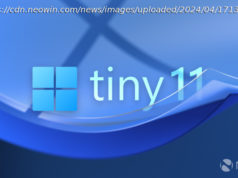Microsoft is continuing to bring more Linux shell options to Windows 10, Windows Server and its Azure Portal.
Microsoft already offers Ubuntu Linux via its Windows Subsystem for Linux in Windows 10.
Now the company is set to add support for more Linux distributions in the coming months, officials said on May 11 during Microsoft’s Build 2017 Day 2 keynote.
The SuSE and Fedora Bash shells — as well as the existing Ubuntu shell — are all going to be available for download from the Windows Store, said Microsoft Executive Vice President of Windows and Devices Terry Myerson.
“We’ve simplified the install of Ubuntu by bringing it to the Windows Store. We also announced we are working with SUSE Linux and Fedora Linux running on the Windows Subsystem for Linux– to bring them to the Windows Store, ” said Myerson in a blog post. “Now, Windows is the only platform that can run both Windows apps and Linux apps side-by-side.”
Windows 10 Creators Update added more than a hundred new features to WSL, Microsoft officials said.
Microsoft also announced preview availability of the Bash shell in its Azure Portal during Build this week. This is called Azure Cloud Shell, and is the Ubuntu Bash shell automatically configured to work with users’ acounts. PowerShell in the Azure Portal is coming soon, officials said this week.
In addition, the Windows Subsystem for Linux is coming to Windows Server, as well, officials announced on May 10. On Windows Server, developers and admins will be able to use the same scripts, tools and container images that they’ve been using for Linux containers on their Windows Server container hosts using Hyper-V isolation.
Speaking of Windows Server, Microsoft is extending its Windows Insider testing program to cover Windows Server, officials said this week. “Starting this summer, regular and frequent builds of Windows Server (including container images) will be available to all Windows Insiders who want to download and test them, ” officials said.






